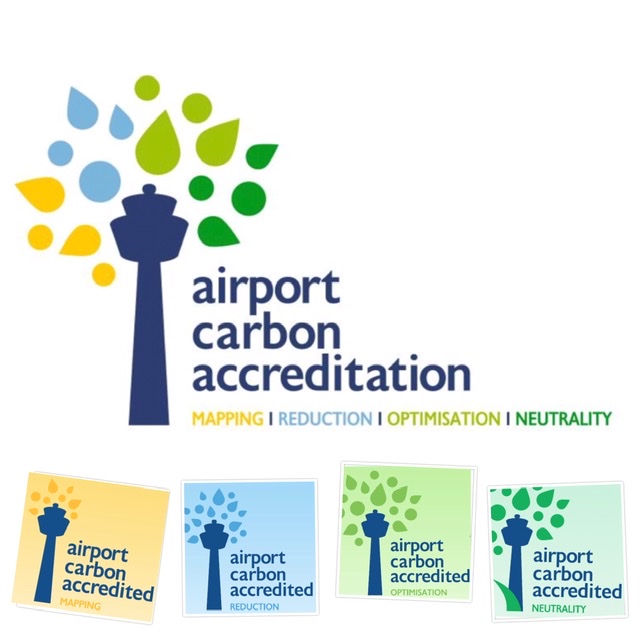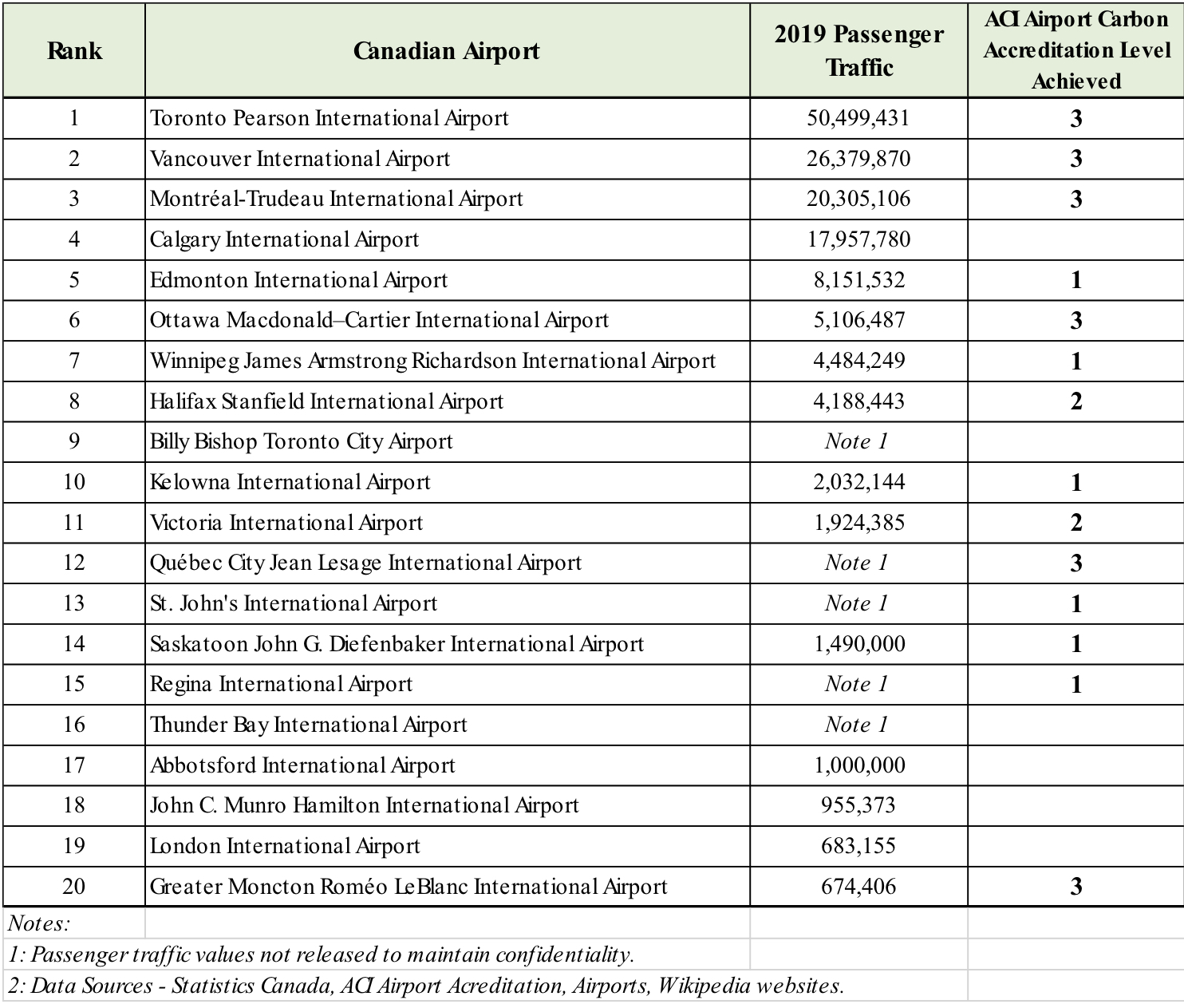By Ted Nickerson
The future of long distant transportation in Canada is aviation. But thanks to the flight-shaming movement, you may have been led to believe that there is no place for aviation in a carbon neutral future. That’s not true.

Sparked by recent comments from the “Stop Flying” proponents seeking to leverage the impact of the COVID-19 pandemic on global commercial aviation, and suggesting maybe aviation should stay this way, a Canada-specific update is in order.
In the Friends of Pickering Airport February 2020 post “Canada’s Carbon Neutral Aviation Challenge”, we discussed how aviation is moving towards carbon neutral flights and mentioned in passing ACC (Airport Carbon Accreditation). That posting stated:
In parallel to ICAO’s CORSIA, Airports Council International (ACI) established the “Airport Carbon Accreditation” (ACC) program in 2009. At COP21 Paris, the United Nations Framework Convention on Climate Change (UNFCC) and ACI entered a partnership to promote and advance the program. The program is supported by the ECAC (European Civil Aviation Conference), ICAO, the FAA, Transport Canada and the UN Environment Program.
The agreement between ACI and UNFCC lends a high degree of legitimacy to ACI’s Airport Carbon Accreditation program. The ACI accreditation program has four progressive certification stages of carbon emissions control and reduction: 1-Mapping, 2-Reduction, 3-Optimization, and 3+-Carbon Neutrality. The ACI program is explained fully at https://www.airportcarbonaccreditation.org/
As of June 2020, there are now 311 airports worldwide (representing more than 45% of global commercial passengers) participating in the ACC program. Sixty-two (62) have achieved the highest level of accreditation – 3+ Carbon Neutrality.
Canada’s commercial airports have made major commitments to the ACI Airport Carbon Accreditation program. That commitment and their progress is highlighted in the following table.

Highlights:
- 14 of the top 20 Canadian airports, representing 80% of the 2019 passenger traffic, are engaged in the ACC program.
- 8 of the top 10, with 75% of the 2019 passengers, are in the ACC program.
- 6 airports, with 65% of the 2019 passenger traffic, have already achieved Level 3 Optimization.
- In addition, Charlottetown and Fredericton airports, with a combined 779,000 passengers in 2019, are at Level 1.
Their efforts are well advanced and are clear indicators of Canada’s airports’ understanding of and commitment to addressing climate change by reducing aviation carbon emissions.
The COVID19 pandemic, like it has for all aspects of society globally, will certainly delay their progress towards airport 3+ Carbon Neutral certification. However, the demonstrated commitment to, and eventual achievement of, carbon neutral status effectively weakens the aviation climate change arguments of the “Stop Flying” crowd.
Today, the only real alternative to flying long distances in most of Canada is to drive. It is more carbon-efficient to fly long distances in Canada than it is to drive, and this aviation versus motor vehicle carbon gap is increasing with the introduction of new aviation technology.
Unlike Europe, Canada’s huge distances and relatively sparse population beyond a few major metropolitan areas make passenger rail economically non-viable. Those same distances are not conducive to subcompact travel on the extended highway networks.
So, what could this mean for a future Pickering Airport?
Simple, it should be a clear and strong expectation that Pickering Airport enter service as Carbon Neutral, or to achieve that status as soon as possible after the commercial passenger in-service date as may be limited by early operational constraints.
Forget the “Stop Flying” naysayers and the COVID-19 political opportunists. The future of long distant carbon neutral communal transportation is aviation. Airport capacity is needed in the GTA before 2036. Toronto Pearson needs congestion relief.
Let’s get on with building Pickering Airport, as well as the other hard tasks needed to create a carbon neutral future.

This out of the blue statement…….. “Airport capacity is needed in the GTA before 2036. Toronto Pearson needs congestion relief.”
Sorry but I do not see you making that point. Nor does GTAA or KPMG make that point in any of their current publications. GTAA did however make it in their 2008 20 year forecast saying practical capacity in 2013- max. in 2019 and Max 6 runway capacity in 2023 (as I recall). Pure unadulterated BS.
More runway bait and switch Ivan? The KPMG report states without reserve that additional aviation capacity is needed. It identifies the key chokepoints as terminal space ( 5 million sq feet needed) and gates ( 250 more gates needed). The only question is where?
the new social distancing and hygiene standards being Recommended need even more terminal space and may double the time on gate for passenger aircraft as they are cleaned and prepped between flights.
Yet you and others are promoting extending your Pickering land leases and delaying the new airport at the expense of us all.
I am at a lost for words at your actions.
“Your Pickering land leases”??? Wrong guy. No actions. Stop that rubbish.
Airport capacity’s are determined by runways. Those being the only capacity determinant (aircraft movements) on the need for additional airports. Go read other than yourself and your sycophantic GTAA / KPMG friends…as in FAA, Mitre corp. Heathrow, Hong Kong, Sydney, Mexico City, Berlin etc.etc. reports.
Go read Toronto’s 2008 20 year plan report and their NASPL.
I am at a complete loss at you continuing lack of any understanding.
Have asked you in the past and you have not made a clear statement, so are you saying you have no financial or life style incentive In stopping Pickering airport?
Do you or your family, have a lease , or have shares in a company that has a land lease? Will you benefit each year the airport is postponed?
Make it clear Ivan, and know too that the information on who has the commercial, residential and farming lease on the Pickering lands will be made public.
Transparency is key to good governance and our democracy’s fight against corruption.
None, nada.zip. Unlike you and your 25 supporters who are ALL “selling their book”.
Mark you are going out of control.
Thankyou for a straight forward answer. Please encourage others in the anti airport crew to answer that question as well. Transparency is key to debate and to good governance.
I am behind anything that will help reduce or eliminate carbon. However, since the last change in the provincial government, we no longer have a Cap and Trade program, at least in Ontario. How are we going to get to carbon neutral without a system that incentivizes companies to CAP their carbon output? What is the plan for going forward other than advocating for the opening of the Pickering Airport? I support the Pickering Airport as a private citizen but, I do not see how that will bring aviation closer to carbon neutral. We need concrete plans and action, not green washing.
I Agree with your comment.
But first we need to optimize.
The big opportunity with Pickering Airport is optimization of traffic flow in the air and on the ground airside and curbside. Being able to reduce/remove the carbon cost of flow control into pearson can create a multi million ton reduction in current emissions.
The final step, in going carbon neutral, fits in with Canada’s environmental goals and our politicians promise to plant billions of trees. This is a way not just to pay for those promises but to create a new industry with a product wanted worldwide by a aviation marketplace by 2028.
The old cap and trade was a job killer, too much stick, not enough carrot.
But the creation of carbon offsets needed by the aviation industry world wide is all about the carrot! Both airports as described and airlines via the ICAO CORSIA program need offsets. Voluntarily now but mandatory in the future ( see ICAO roadmap). It is a tremendous new opportunity for Canadian farmers and entrepreneurs to create a new product to sell to the world. if properly packaged It will create jobs and economic benefits.
It will enable a Canadian farmer to earn money from replanting and managing a traditional woodlot. It could even be a way for government to off load to private enterprises the costs of seeding and managing forest areas destroyed by Beatles or fire.
It is a billion dollar opportunity. An earlier post discusses the carbon value of trees:
https://pickeringairport.org/trees-and-pickering-airport/